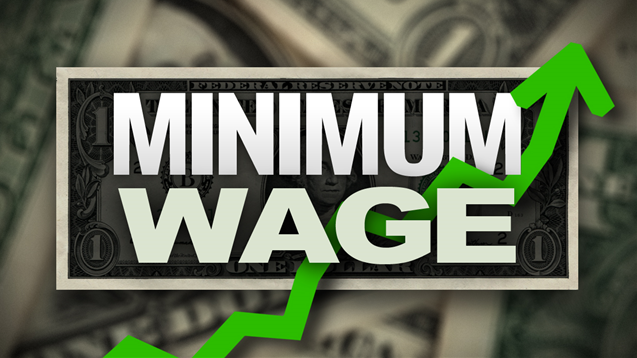The IRS made tax changes for 2025 to Standard Deductions, Tax Brackets, Flexible Spending Accounts, and various other credits and limits.
Standard Deduction
The Standard Deduction indicates the portion of income not subject to tax that can be used to reduce one’s tax bill. Standard Deductions will rise an average of 2.7% for 2025 versus 5.4% for 2024.
| Filing Status | Standard Deduction 2023 | Standard Deduction 2024 | Standard Deduction 2025 |
|---|---|---|---|
| Individual or Married Filing Separately | $13,850 | $14,600 | $15,000 |
| Married Filing Jointly | $27,700 | $29,200 | $30,000 |
| Head of Household | $20,800 | $21,900 | $22,500 |
Tax Brackets
A comparison of income tax rates and ranges for 2024 and 2025 is shown below. After 2025, lower taxes enacted by former President Donald Trump will sunset without action from Congress. If the provision expires, the tax brackets will revert to 2017 levels, shifting to 10%, 15%, 25%, 28%, 33%, 35% and 39.6%
Single Filing Individual Return
| Tax Rate | 2024 Taxable Income | 2025 Taxable Income |
|---|---|---|
| 10% | $0 to $11,600 | $0 to $11,925 |
| 12% | Over $11,600 to $47,150 | Over $11,925 to $48,475 |
| 22% | Over $47,150 to $100,525 | Over $48475 to $103,350 |
| 24% | Over $100,525 to $191,950 | Over $103,350 to $197,300 |
| 32% | Over $191,950 to $243,725 | Over $197,300 to $250,525 |
| 35% | Over $243,725 to $609,350 | Over $250,525 to $626,350 |
| 37% | Over $609,350 | Over $626,350 |
Married Filing Joint Returns
| Tax Rate | 2024 Taxable Income | 2025 Taxable Income |
|---|---|---|
| 10% | $0 to $23,200 | $0 to $23,850 |
| 12% | Over $23,200 to $94,300 | Over $23,850 to $96,950 |
| 22% | Over $94,300 to $201,050 | Over $96,950 to $206,700 |
| 24% | Over $201,050 to $383,900 | Over $206,700 to $394,600 |
| 32% | Over $383,900 to $478,450 | Over $394,600 to $501,050 |
| 35% | Over $478,450 to $731,200 | Over $501,050 to $751,600 |
| 37% | Over $731,200 | Over $751,600 |
Married Filing Separate Returns
| Tax Rate | 2024 Taxable Income | 2025 Taxable Income |
|---|---|---|
| 10% | $0 to $11,600 | $0 to $11,925 |
| 12% | Over $11,600 to $47,150 | Over $11,925 to $48,475 |
| 22% | Over $47,150 to $100,525 | Over $48,475 to $103,350 |
| 24% | Over $100,525 to $191,950 | Over $103,350 to $197,300 |
| 32% | Over $191,150 to $243,725 | Over $197,300 to $250,525 |
| 35% | Over $243,725 to $365,600 | Over $250,525 to $375,800 |
| 37% | Over $365,600 | Over $375,800 |
Head of Household
| Tax Rate | 2024 Taxable Income | 2025 Taxable Income |
|---|---|---|
| 10% | $0 to $16,550 | $0 to $17,000 |
| 12% | Over $16,550 to $63,100 | Over $17,000 to $64,850 |
| 22% | Over $63,100 to $100,500 | Over $64,850 to $103,350 |
| 24% | Over $100,500 to $191,950 | Over $103,350 to $197,300 |
| 32% | Over $191,950 to $243,700 | Over $197,300 to $250,500 |
| 35% | Over $243,700 to $609,350 | Over $250,500 to $626,350 |
| 37% | Over $609,350 | Over $626,350 |
Tax brackets show the percentage you’ll pay in taxes on each portion of your income. A common misconception is that the highest rate is what you’ll pay on all of your income, but that is incorrect.
Here is an example of a single taxpayer who earns $110,000. In 2025, they take a standard deduction of $15,000, reducing her taxable income to $95,000, and have no other deductions.
They will pay:
- 10% tax on their first $11,925 of income, or $1,192.50 in taxes
- 12% tax on income from $11,925 to $48,475 or $4,386
- 22% tax on the portion of income from $48,475 up to $103,350. In this instance, the cap would be the taxable income of $95,000, or $10,253.50
Total Tax Liability is $15,832 or an effective tax rate of 14.38%
Retirement Contributions
In 2025, the maximum contributions to 401k/403b/457/TSP retirement plans for those under 50 increased to $23,500.
The maximum contribution for those 50 or older is $31,000 in 2025 because of an additional $7,500 in catch-up contributions.
A new rule is that if you are 60-63 by the end of 2025, your catch-up contribution will be $11,250 instead of the $7,500, allowing up to $34,750 in maximum contributions.
For 2025, the total contributions — from the employee and your employer — cannot exceed $70,000 or 100% of your compensation, whichever is less. In addition, those over 50 can contribute an additional $7,500 to their retirement plan.
Flexible Spending Accounts
Flexible spending accounts (FSA) allow workers to put money, up to the limit permitted by the IRS, in an account to pay for medical expenses. Because the funds are taken from their accounts on a pre-tax basis, this offers tax savings for many workers.
The IRS limit for FSA contributions for 2025 is $3,300, an increase from the current tax year’s threshold of $3,200. The maximum carryover for plans that allow it will be $660 from 2024, up from $610 in 2023.
Health Saving Accounts
Those with High-Deductable High Premium Medical Insurance can contribute to a Health Savings Account (HSA) and invest the funds, which enables the money in the HSA to grow tax-free. The IRS sets annual limits on the amount you can contribute to an HSA, which change periodically. Here are the maximum amounts you can contribute to an HSA in 2025:
- For self-only coverage, contribution limits are $4,300, up from $4,150 in 2024
- For family coverage, contribution limits are $8,550, up from $8,300 in 2024
Earned Income Tax Credit
The Earned Income Tax Credit (EITC) amount is as follows for 2025. The table displays the maximum income limits to qualify for the EITC.
| Children or Relatives Claimed | Earned Income Credit | Filing as Single, Head of Household, or Widowed (2024) | Filing as Married Filing Jointly (2024) |
|---|---|---|---|
| Zero | $649 | $19,104 | $26,214 |
| One | $4,328 | $50,434 | $57,554 |
| Two | $7,152 | $57,310 | $64,430 |
| Three or more | $8,046 | $61,555 | $68,675 |
Child Tax Credit
Congress did not change the Child Tax Credit for 2025, which will remain at $1700.
Estate Tax Credit
The IRS provides a Unified Credit Against Estate Tax exemption of $13.99 million from the estate tax, up from $13.61 million for people who died in 2024.
Gift Exclusion
People can also give up to $19,000 in gifts in 2025 without paying taxes on the money, up from $18,000 in 2024.
How can we help?
Time Equipment Company’s integrated payroll system helps your organization become more efficient, improve productivity, and increase retention, all while staying compliant. For more information, contact Time Equipment Company at sales@timeequipment.com or 800-997-8463.
*This information simplifies complex Acts as it is understood by Time Equipment Company. It is not to be taken as legal advice. The regulations for this program are changing. For further information about the federal tax changes, please visit www.irs.gov.










